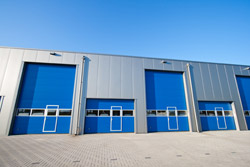Industrial space has outperformed its commercial counterparts (office and retail) in the past year or so in terms of rental trends, demand and vacancy rates.
 The national vacancy rate for industrial property is at around 3.5%, according to the SAPOA Q1 2015 Industrial Vacancy Report, and it is anticipated that the 2014 trend of reasonable rental returns and fair capital growth will continue for the foreseeable future.
The national vacancy rate for industrial property is at around 3.5%, according to the SAPOA Q1 2015 Industrial Vacancy Report, and it is anticipated that the 2014 trend of reasonable rental returns and fair capital growth will continue for the foreseeable future.“This is despite the fact that overall there is muted investment in the commercial property space at the moment as many businesses adopt a ‘wait and see’ approach due to the unstable rand, labour issues, a poor general economic outlook and political instability in the country,” says Chris Renecle, MD of Renprop.
The national vacancy rate for industrial property is at around 3.5%, according to the SAPOA Q1 2015 Industrial Vacancy Report, and it is anticipated that the 2014 trend of reasonable rental returns and fair capital growth will continue for the foreseeable future. The report also noted that the industrial sector’s base rental has continued to grow well above inflation, which it says shows further proof that the demand is outstripping supply. “This is possibly one of the reasons driving the spec development of industrial warehouse space by the larger property funds recently,” he says.
Renecle notes that while a declining economy has added further pressure to the commercial property market, in the industrial sector the reduction in locally manufactured products has been cause for concern. However, he says that as noted in the SAPOA Q1 2015 Industrial Vacancy Report, the supply of industrial space remains significantly lower than the levels seen during the 2007/2008 property market peak and as such, low vacancy rates and strong rental growth have prevailed.
“The industrial property market will remain tenant-driven, and currently it’s the importers and logistics companies that are driving the demand for industrial space,” he says. “While manufacturers are not making as much use of industrial storage or warehousing space as they used to due to the decrease in production, importers are picking up the slack somewhat as the level of imported products increases to meet consumer demand.”
He says logistics companies are also on the lookout for good industrial space close to airports and/or major transport routes.
Currently the demand for industrial space in Gauteng mainly falls within the East Rand, particularly in Isando, and Midrand areas, with industrial parks like Longmeadow and Linbro Park remaining exceptionally popular options, says Renecle. These areas have exceptionally low vacancy rates as demand it outstripping supply. “In fact, during 2014, Linbro Park had a 0% vacancy rate according to the SAPOA Q1 2015 Industrial Vacancy Report, while Isando, Linbro Park, Jet Park and Midrand all showed improving rental growth momentum.
The size of industrial space varies from 5 000sqm to 30 000sqm, with monthly rentals ranging from around R50 to R70 per square metre. Looking at trends in the sector, Renecle says that statistics show that during 2014 the lowest vacancy rates were seen in industrial buildings measuring up to 5 000sqm, while industrial space measuring between 10 000sqm and 25 000sqm achieved the highest annual base rental growth of 8.6% as at December 2014.
“During the next six months and into the new year, we don’t anticipate much to change on the industrial property landscape, as supply has a way to go before it catches up with demand,” says Renecle.







